 Sarah Hannah Gómez has an MA in children’s literature and an MS in library and information science from Simmons College. Currently
Sarah Hannah Gómez has an MA in children’s literature and an MS in library and information science from Simmons College. Currently ![]() she works as a school librarian in Northern California. An aspiring novelist and screenwriter, she is passionate about social issues in literature and social media engagement with books. She spends the rest of her free time singing, reading, and learning to run. Visit her blog at http://mclicious.org.
she works as a school librarian in Northern California. An aspiring novelist and screenwriter, she is passionate about social issues in literature and social media engagement with books. She spends the rest of her free time singing, reading, and learning to run. Visit her blog at http://mclicious.org.
I was going to start this post with something pithy like, “How to survive the apocalypse: Be white. Or Morgan Freeman. Or, 2012 onwards, be a Kravitz!” I was going to tell you how dystopian and post-apocalyptic fiction and film allow creators to act out a future and explore countless possibilities that could ruin or save the world. And that is kind of what’s happening, though it’s a lot more complicated than that…
Have you noticed that every movie trailer that talks about Earth after some catastrophic event displays a civilization of white people (and 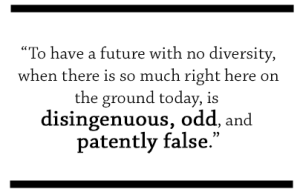 Morgan Freeman) speaking American English? Sure, some of that is unavoidable and practical–you can’t make a movie about everyone and in every language at the same time–but it’s also ethnocentric and exceptionalist of us. Not to mention problematic in myriad ways, because the lack of diversity goes utterly unacknowledged.
Morgan Freeman) speaking American English? Sure, some of that is unavoidable and practical–you can’t make a movie about everyone and in every language at the same time–but it’s also ethnocentric and exceptionalist of us. Not to mention problematic in myriad ways, because the lack of diversity goes utterly unacknowledged.
Generally in dystopia, the reader understands everything about the society in the story as a copy of their own, except when the author specifically points out the rules that make it different. So to have a future with no diversity, when there is so much right here on the ground today, is disingenuous, odd, and patently false.*
As it’s the United States that is driving the current success of dystopian genre, let’s look specifically at o
ur diversity. White people will no longer be the majority within thirty years, says the Brookings Institution. And in the meantime, people of color are rising to positions of power (hey, Obama!) all over, and while we have a long way to go, old bastions of whiteness and power are being dismantled. While I can’t say this from experience, since I’m a woman of color, I can imagine that this is terrifying to people who are in a position to lose their power. If I were someone with lots of privilege and power, I would want to hold onto it, and it would be very nice to create a world in which I could.
If you look at it that way, you can see why it’s so popular to whitewash the future. A dystopian world is the ultimate controlled environment, so why not control the things you fear, like losing your power or sharing it with people different from you?
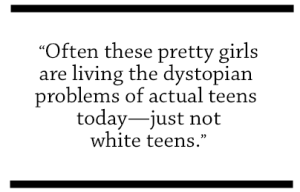 The Hunger Games goes the route of having a nearly white world with the usual Noble Savage (Thresh) and Magical Negro (Rue) to guide and humanize the protagonist and ultimately sacrifice themselves for her. For all that it’s a classic that works very well, The Giver talks about how Jonas only begins to see color when he sees Fiona’s hair, but there is never any mention or questioning of skin tones and what they might mean, though all sorts of interesting “post-racial” ideas could come out of such a discovery. Countless other dystopias, like the Eve series, Crewel, and so many that have combined in my head, star pretty white girls who have the problems that come with having long, flowing hair and yet being physically strong and adorably unaware that everyone is in love with them.
The Hunger Games goes the route of having a nearly white world with the usual Noble Savage (Thresh) and Magical Negro (Rue) to guide and humanize the protagonist and ultimately sacrifice themselves for her. For all that it’s a classic that works very well, The Giver talks about how Jonas only begins to see color when he sees Fiona’s hair, but there is never any mention or questioning of skin tones and what they might mean, though all sorts of interesting “post-racial” ideas could come out of such a discovery. Countless other dystopias, like the Eve series, Crewel, and so many that have combined in my head, star pretty white girls who have the problems that come with having long, flowing hair and yet being physically strong and adorably unaware that everyone is in love with them.
Not only is this a tired trope overall, but often these pretty girls are living the dystopian problems of actual teens today–just not white teens—
so it seems a missed opportunity to do what dystopia does best: safely explore and criticize a contemporary problem in a made-up place. Adelice in Crewel is snatched from her family in order to be trained to be a useful member of society and told she can’t associate with her relatives anymore, which sounds like the experience many Native American children had in the twentieth century when they were sent to schools tasked with making them less “savage.” And before she’s whisked away, her parents encourage her to fail the test that ultimately makes her become a Spinster. I can see a lot of parallels with the way members of minority groups must carefully balance their membership in their ethnic group with their membership in their class group, especially if their socioeconomic class does not match the one traditionally associated with their ethnic group.
Otherwise harmless and fun books like The Neptune Project attempt to have a diverse supporting cast, but fail when examined beyond a superficial level. Sentences like “I realize that he looks Asian” are awkward and technically meaningless. Pointing out a specific characteristic first and foremost, while never starting off that way when meeting a new person who is white, perpetuates the assumption that white is the default, the “normal” from which all other humans deviate.
Visual representation in films set in the future is also important, and in some ways improving. In Veronica Roth’s book Divergent, Tris’s best friend Christina is black, and she remained so in the film, where Zoë Kravitz played Christina alongside two other actors of color in significant speaking roles. The CW’s new TV show The 100, based on Kass Morgan’s book, has two black characters and other actors of color.**
However, in both worlds, everyone is essentially raceless. This could be considered progressive in some ways–they just live normal human lives, as people of color are sometimes observed to do in nature. But it is problematic in others. Does race really not impact these characters’ lives in any way? How can a society be at once so peaceful and advanced as to be post-racial and yet be so broken that it needs teenagers to dismantle its entire structure (Divergent) or rebuild its world (The 100)?
The 100 misses a huge opportunity to do more with race and ethnicity–its premise, that juvenile delinquents are sent to re-colonize Earth the way convicts were sent to Australia, could allow for an exploration of how incarcerated youth in our world today are disproportionately black and brown. Instead, nearly every member of the 100 is white.
I’m not saying there’s nothing good out there. The Summer Prince, by Alaya Dawn Johnson, is set in futuristic Brazil, stars teens and adults of various shades of brown, is a veritable queer utopia, and allows both its characters and its readers to grapple with complex questions about technology and ethics without coming to one conclusion. But even after making the National Book Award longlist, it was ignored by ALA in all of its awards, and it’s not getting nearly the amount of recognition it should be getting, neither for its literary quality nor for its progressive strides.
of various shades of brown, is a veritable queer utopia, and allows both its characters and its readers to grapple with complex questions about technology and ethics without coming to one conclusion. But even after making the National Book Award longlist, it was ignored by ALA in all of its awards, and it’s not getting nearly the amount of recognition it should be getting, neither for its literary quality nor for its progressive strides.
Still, we seem to be on the cusp of something different when it comes to diversity in science fiction. Then again, The Cusp tends to be when people about to lose power get more aggressive about what they’re about to lose, so we could be on our way to much better or much worse. It will be interesting to watch. And read.
*However, were an author to acknowledge the blinding whiteness with a backstory about white supremacy where only the white people were allowed on the spaceship or inoculated against the great plague, that could be a fascinating read, actually.
**Though we’ll see if Henry Ian Cusick’s character ever gets to allude to the actor’s Latino heritage.
Looking for diversity in your dystopias? Try these:
The Tankborn trilogy
Or check out this list of dystopias featuring diverse characters.
Filed under: guest blogger, Tu Books Tagged: diverse YA, dystopia, race in entertainment, race in TV, Race issues, Tu Books



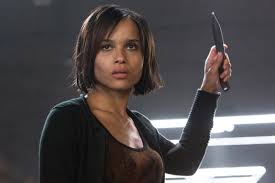
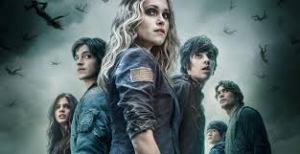
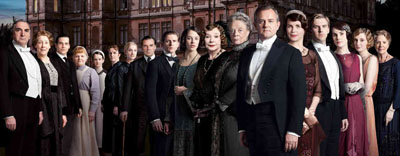
Thanks for having me!
Great post. I suspect that the reason many protagonists of dystopian YA novels are white females is because their authors are white females, and it can be tricky to write a novel from a POV that differs substantially from your own.
I think the real question, which you get at a little bit here, is why does dystopian fiction appeal so much to largely white, female authors in the first place? And why does present-day, realistic fiction appeal to authors of color? The latter observation may not in fact be a trend, but I remember Jacqueline Woodson remarking that she was afraid the type of fiction she wrote–contemporary, realistic–was being displaced by the dystopian trend. It’s certainly worth thinking about.